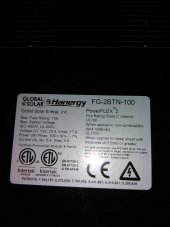I have a solar mounting company because it is a problem I like solving - you’re welcome on the time, no worries at all.
If I were designing for myself and just cheap and functional, maybe this addresses your issues:
1) mount the panels to good quality polycarbonate sheet - not super heavy and not metal, still gets you some real estate beyond the panels themselves for attachment area. Maybe you can get large enough sheets to mount multiple panels one sheet of PC to avoid extra attachment points - 3 panels per sheet? I don’t know the area of the panels vs. available sheet vs. available continuous areas (no penetrations or shading equipment) on your roof.
Noteworthy consideration: Unless the roof area is flat, you need to mount the underlayment (PCarb sheet) and then adhere the panel - gluing them together and then bending creates shear stress in your solar panel worth avoiding.
1) B). There is a version of this used in greenhouses called Polygal, one example:
https://www.interstateplastics.com/...&vid=20210701170056-4p&kitoptionpk=7253&qty=1. That material basically has air channels built right into it and downside is it is not dead flat on either surface and only bends in one direction and then, not much; but one option for a pretty direct mount with some air convection under your panel and some ability to bond 100% of solar area to substrate then mechanically attach a removable connection to the substrate which you will be happy for if you have the eventual damage to a panel.
2) In the case you are using a solid sheet of polycarbonate sheet (better for conforming in two directions is one reason to, also dead flat surface to support and adhere your solar panel) A similar polyethylene channeled product is used for sign making and a metal wire holder is stuck into the bottom of the channels to hold up the sign - these are everywhere and easy to just stop and pick up along roadsides - free! Unless it is a contractor sign in front of one house, these have usually been placed illegally, esp if nailed on a utility pole. Collect a stack of these and you have cleaned up some litter! Or you can buy a larger unprinted piece at a sign making shop. Cut into strips and use high quality tape like Gorilla duct tape along the edges parallel to the channels or at least sand off anything sharp along all edges. These are now spacers through and around which some air can flow but in any case, any less area of these separating the polycarbonate from the EPDM and you have reduced conduction a lot and introduced some airspace under your substrate.
3) you have to be savvy about how to attach to or through the EPDM. I’d want to clamp and glue some rigid sections of aluminum along the edges of the poly carb for at least 50% of the total perimeter, glue my spacers to 50% of the area of the back of the polycarbonate sheet and lay on the roof, then attach the aluminum to the EPDM in enough spots to hold it down. I’d add a low profile aluminum fairing on the roof 1.5” away from the edge of the polycarbonate sheet edge to flow air over it when moving, wider than leading edge and probably along the sides as well.
There is a lot to that 1,2,3, but all feasible and as lightweight as it gets, as much airspace as possible, no metal touching the solar panels glued as mfgr instructs and best of all, provides shade to your roof and still removable when a tree branch falls on a panel needing replacement. Sorry we’re (probably) not neighbors and if this isn’t helpful.
Good luck!
 globalsolar.com
globalsolar.com



